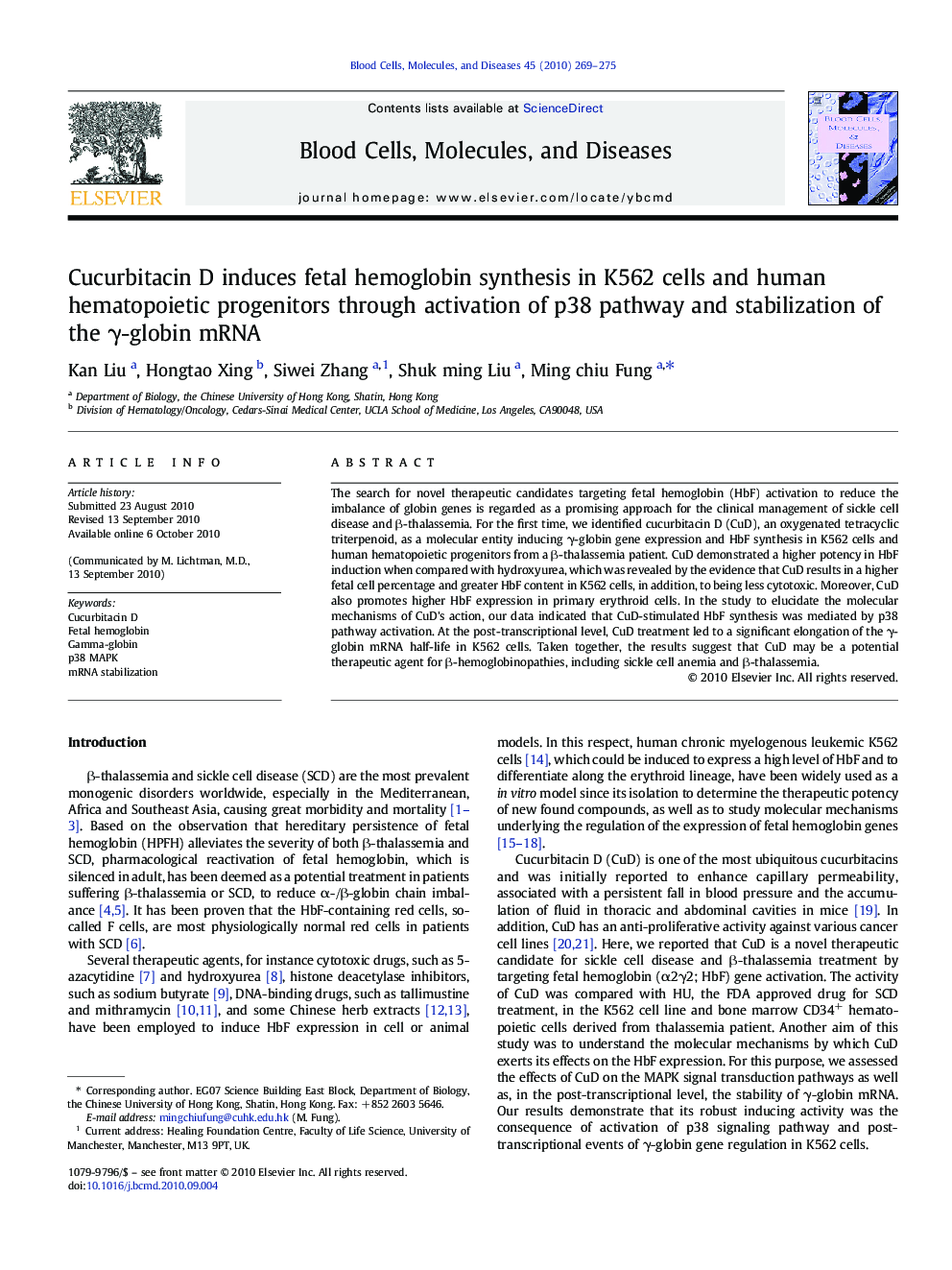| کد مقاله | کد نشریه | سال انتشار | مقاله انگلیسی | نسخه تمام متن |
|---|---|---|---|---|
| 2827434 | 1162444 | 2010 | 7 صفحه PDF | دانلود رایگان |

The search for novel therapeutic candidates targeting fetal hemoglobin (HbF) activation to reduce the imbalance of globin genes is regarded as a promising approach for the clinical management of sickle cell disease and β-thalassemia. For the first time, we identified cucurbitacin D (CuD), an oxygenated tetracyclic triterpenoid, as a molecular entity inducing γ-globin gene expression and HbF synthesis in K562 cells and human hematopoietic progenitors from a β-thalassemia patient. CuD demonstrated a higher potency in HbF induction when compared with hydroxyurea, which was revealed by the evidence that CuD results in a higher fetal cell percentage and greater HbF content in K562 cells, in addition, to being less cytotoxic. Moreover, CuD also promotes higher HbF expression in primary erythroid cells. In the study to elucidate the molecular mechanisms of CuD's action, our data indicated that CuD-stimulated HbF synthesis was mediated by p38 pathway activation. At the post-transcriptional level, CuD treatment led to a significant elongation of the γ-globin mRNA half-life in K562 cells. Taken together, the results suggest that CuD may be a potential therapeutic agent for β-hemoglobinopathies, including sickle cell anemia and β-thalassemia.
Journal: Blood Cells, Molecules, and Diseases - Volume 45, Issue 4, 15 December 2010, Pages 269–275